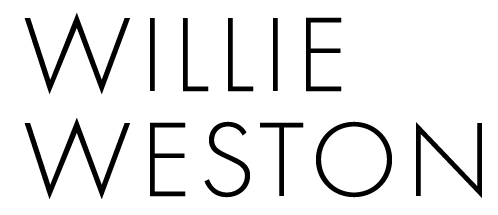Bugai Whyoulter: in profile
Bugai Whyoulter painting at the Martumili Artists art shed, Kunawarritji. Photo – Martumili Artists.
This piece first appeared on The Design Files on 6 April 2017. Updated March 2024.
For a long time, Bugai Whyoulter wove baskets. She watched other women paint, but remained an observer. Later, she explained that “she had been uncertain how to begin”.
These days, Bugai is a master of colour, gesture and subtlety; an intuitive communicator of ancestral stories. She works through Martumili Artists, an Indigenous-owned and operated art centre based in Newman (Parnpajinya), in the Pilbara region of northern Western Australia. Martumili Artists supports Martu artists living and working across thousands of square kilometres, and hailing from numerous language groups: Manyjilyjarra, Kartujarra, Putijarra, Warnman and Martu Wangka.
Bugai Whyoulter in Martumili studio, Newman. Photo - Martumili Artists.
Bugai was born c. 1940 at Pukayiyirna, now called Balfour Downs Station. She is Kartujarra woman and a senior custodian of the lands surrounding Kunawarritji (Canning Stock Route Well 33). For much of her, life, she was of the pujiman (traditional, nomadic) generation. She grew up walking and hunting the areas of Jigalong, Nullagine, Punmu and Kunawarritji. As a girl, Bugai travelled the Canning Stock Route – an almost 2000-kilometre-long track that traverses the Great Sandy, the Little Sandy and the Gibson Deserts. She continued to live nomadically until the 1960s, when she settled at Jigalong Mission with her family.
Bugai now lives and works in Kunawarritji in the Great Sandy Desert, some 1500 kilometres from Newman and Martumili HQ. Kunawarritji is a place where ancestral stories and colonial histories intersect, and is also a key subject of Bugai’s work.
Kunawarritji (Well 33 on the Canning Stock Rote). Photo – Martumili Artists.
Bugai’s approach to painting is very intuitive. She starts with a limited palette and works incrementally across the canvas. Her works are layered and often delicate, with subtle colour changes representing landmarks, waterways, and desert flora. Her gestural style “is thought to stem from Martu practices of drawing in the sand” to communicate ancestral stories, says Martumili Artists Coordinator, Amy Mukherjee. Bugai’s ability to transfer an intimate knowledge of her land onto the two-dimensional surface appears effortless, and has earned her a significant reputation – her work is held in the collections of the Queensland Art Gallery, the National Gallery of Victoria and the National Museum of Australia.
Bugai Whyoulter, Wantili Claypan 2015, acrylic on canvas, 122 x 91cm. Photo – Paul Johnstone Gallery.
Bugai Whyoulter, Untitled 2015, acrylic on canvas, 91 x 61cm. Photo – Paul Johnstone Gallery.
Bugai Whyoulter, Wantili 2016, acrylic on canvas, 122 x 91cm. Photo – Martumili Artists.
Bugai first began painting in 2007 under the guidance of her relatives Nora Nungabar and Nora Wompi: “Nungabar and Wompi really know how to paint; I watched them and learned from them”. These three women have created a number of stunning collaborative works together, including Kunawarritji Ngurra, pictured above and currently on show at Martumili Artists as part of an exhibition exploring the hunting practices of the Martu people: Yarrkalpinti Warrarnpa - Hunting Grounds.
Bugai Whyoulter, Nora Wompi and Nora Nungabar, Kunawarritji Ngurra 2013, acrylic on canvas, 183 x 183cm. Photo – Martumili Artists.
For obvious reasons, Bugai’s work is highly sought after. She currently has works in an exhibition at FORM (Perth) called Flight: Aboriginal perspectives from the sky and in Women of Martu at Suzanne O’Connell Gallery (Brisbane) from 1 - 29 April. Bugai’s work is also available through Paul Johnstone Gallery (Darwin), McCulloch and McCulloch (Melbourne) and Aboriginal Contemporary (Sydney).
Burning country, Kunawarritji. Photo – Martumili Artists.








